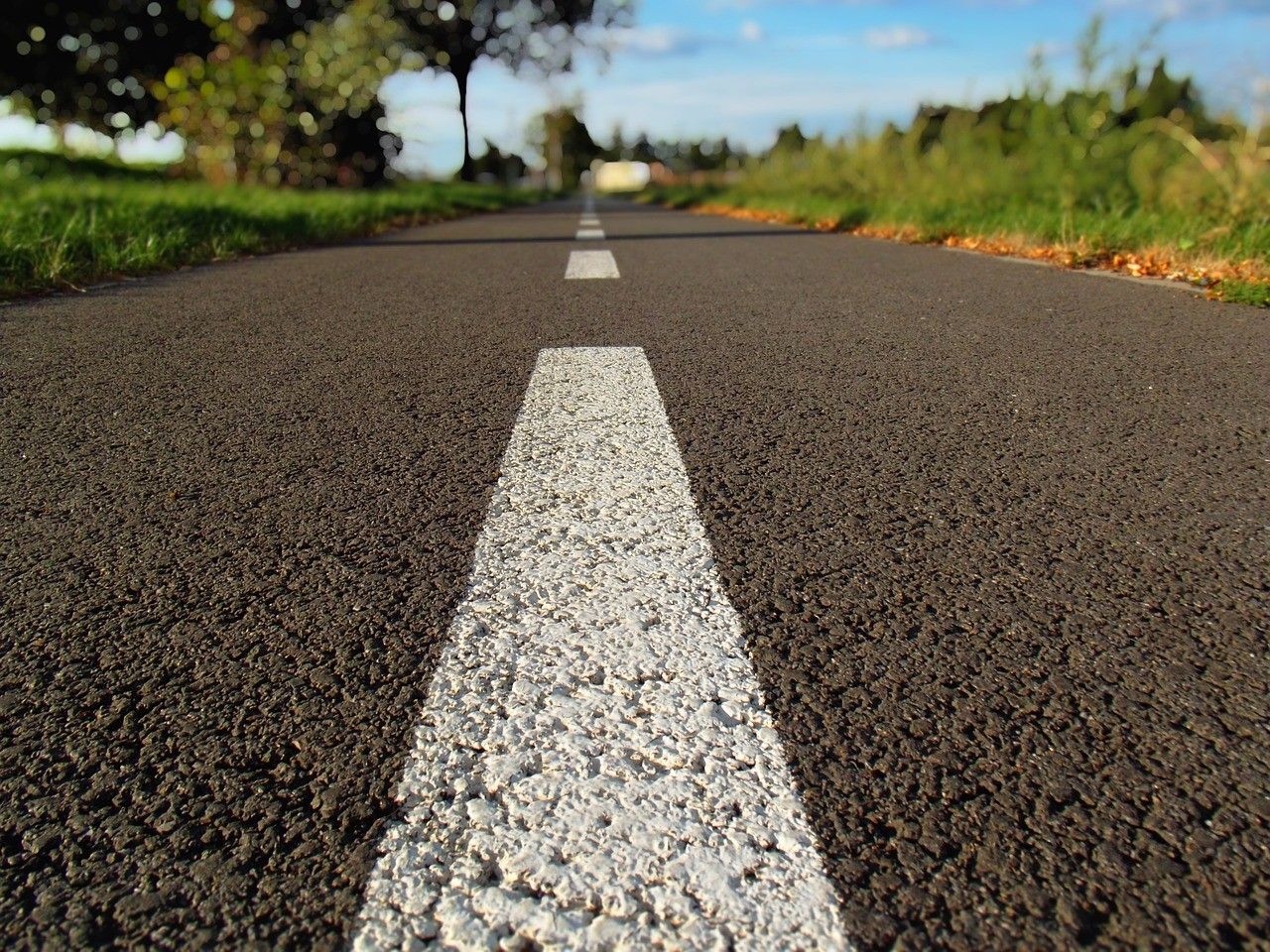ROAD STRIPING

PAINTSTRIPING
Time Striping has been striping roads since 1977 and to this day it is still a huge part of the services we offer to our customers. As a company, we are heavily involved with the American Traffic Safety Services Association (ATSSA) and our technicians regularly attend the training courses they offer. This is to ensure that safety is always paramount on all our job sites, and quality is always at optimum levels.
Road surface markings are used on paved roadways to provide guidance and information to drivers and pedestrians. The uniformity of markings is an important factor in minimizing confusion and uncertainty about their meaning. This is why all our technicians are also trained on the Manual of Uniform Traffic Control Devices (MUTCD) and State DOT Specifications.
Time's typical striping crew consists of a paint spray truck supported by an advance warning vehicle, and a trailing warning vehicle to caution motorists of the striping operation. Depending on the project, one edge line and the centerline may be striped at the same time. The paint truck applies glass beads into the fast drying wet paint, and the rear support vehicle follows as the paint dries. Under normal weather conditions, the paint dries in a minute or two.
Our project managers will come out to measure and assess your project for passing lanes, lane widths, and other considerations. After gathering the information we will provide any suggestions to ensure your project meets DOT and MUTCD specifications, and give you a free quote to do all the work. We understand that counties and municipalities may need this information in advance to plan and budget or to apply for grants and other aid.
Our goal is to be a partner in making your roads as safe as possible on whatever budget you have to work with!
THERMOPLASTICPAVEMENT MARKINGS
Heated to approximately 400 degrees, the thermoplastic material consists of pigments, binders, and glass beads that form a durable, longer lasting product with nighttime visibility. Time uses thermoplastic sealer on Portland Concrete and aged asphalt surfaces. The sealer is applied prior to the application of thermoplastic pavement marking materials and ensures a high quality bonding of the material to the surface.
If you have existing paint, epoxy, polyester, or tape pavement markings, they must be removed at least by 90% to provide adequate bonding. Removal of existing thermoplastic is required. Existing road markings can be removed by Time using grinding methods at very reasonable rates.
Having the roadway free of these debris items will allow for a better bond and a longer lasting line. Waiting also helps prevent any of these oils, dirt, etc. from being tracked or deposited onto the new thermoplastic markings making them less bright and reflective.


RAISEDPAVEMENT MARKINGS AND TAPE
- Jobs Serviced "On Time Every Time"
- Jobs Completed with Quality & Professionalism
- Experienced and Dependable Personnel
- ATSSA Certified Traffic Control Supervisors
- Signs • Solar Arrow Boards • Solar Message Centers • Low Density Drums
- Collared and Plain Cones • Type I, and III Barricades • Type A\C Lights
- Temporary Work Zone Signage • Lane Closures • Portable Traffic Signals
- Automated Portable Flaggers
